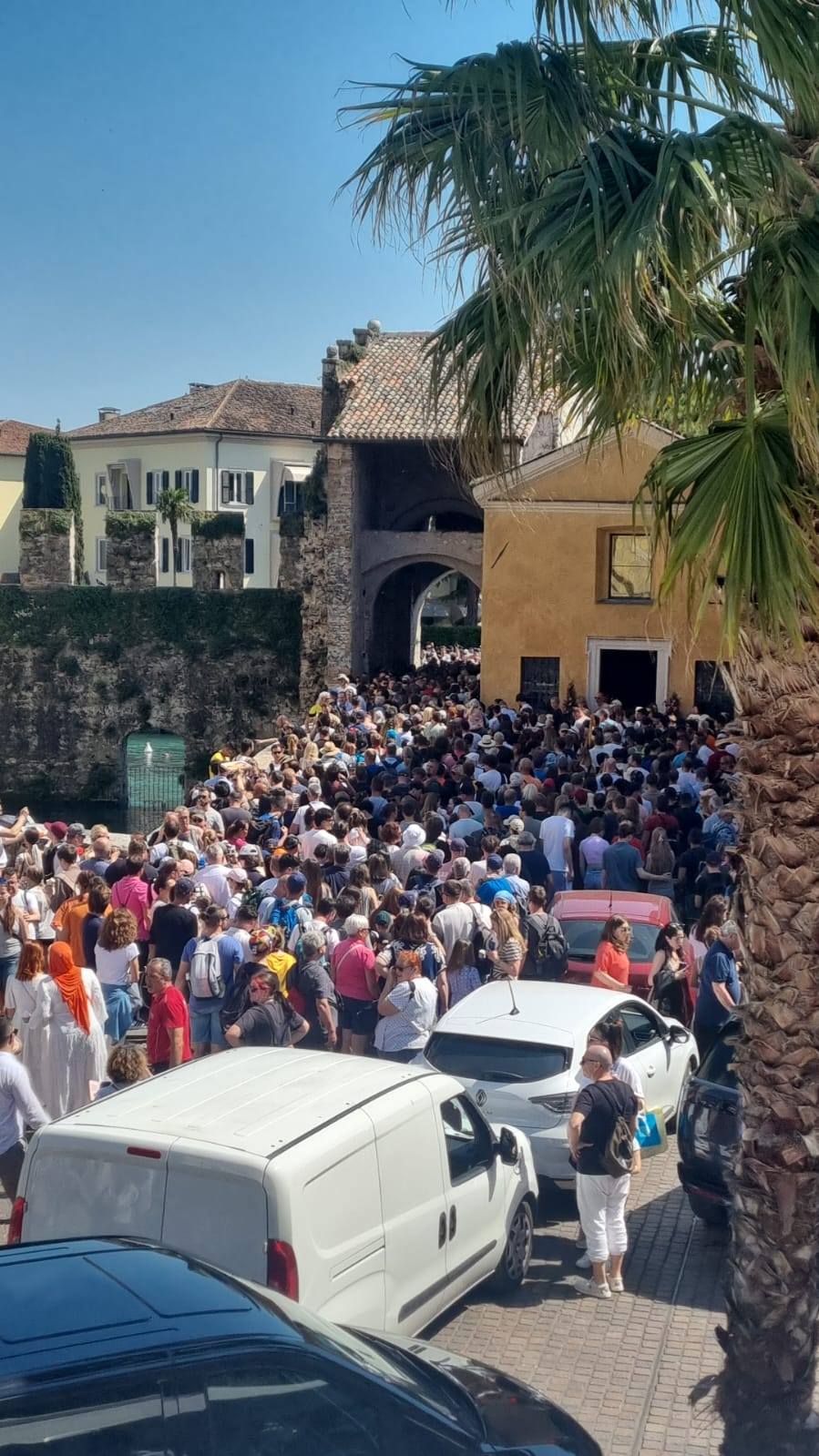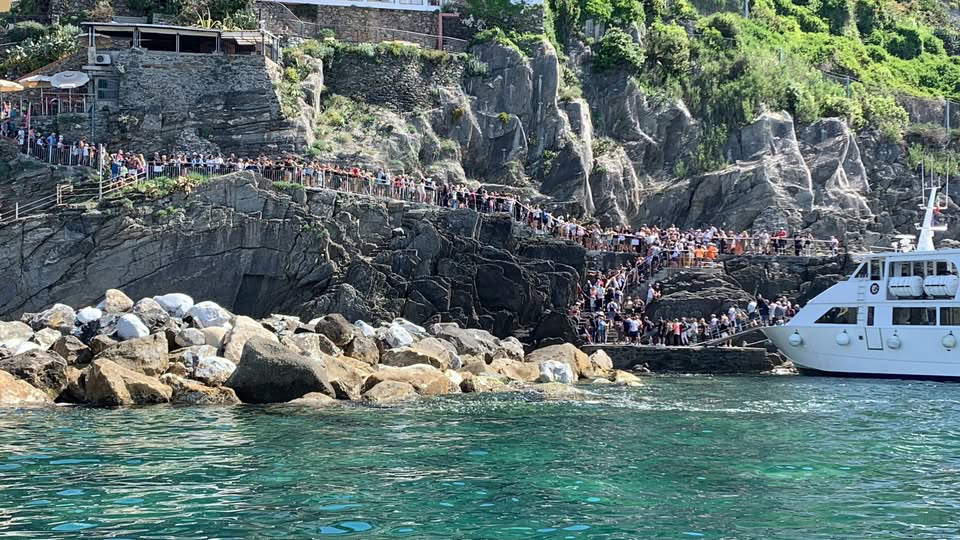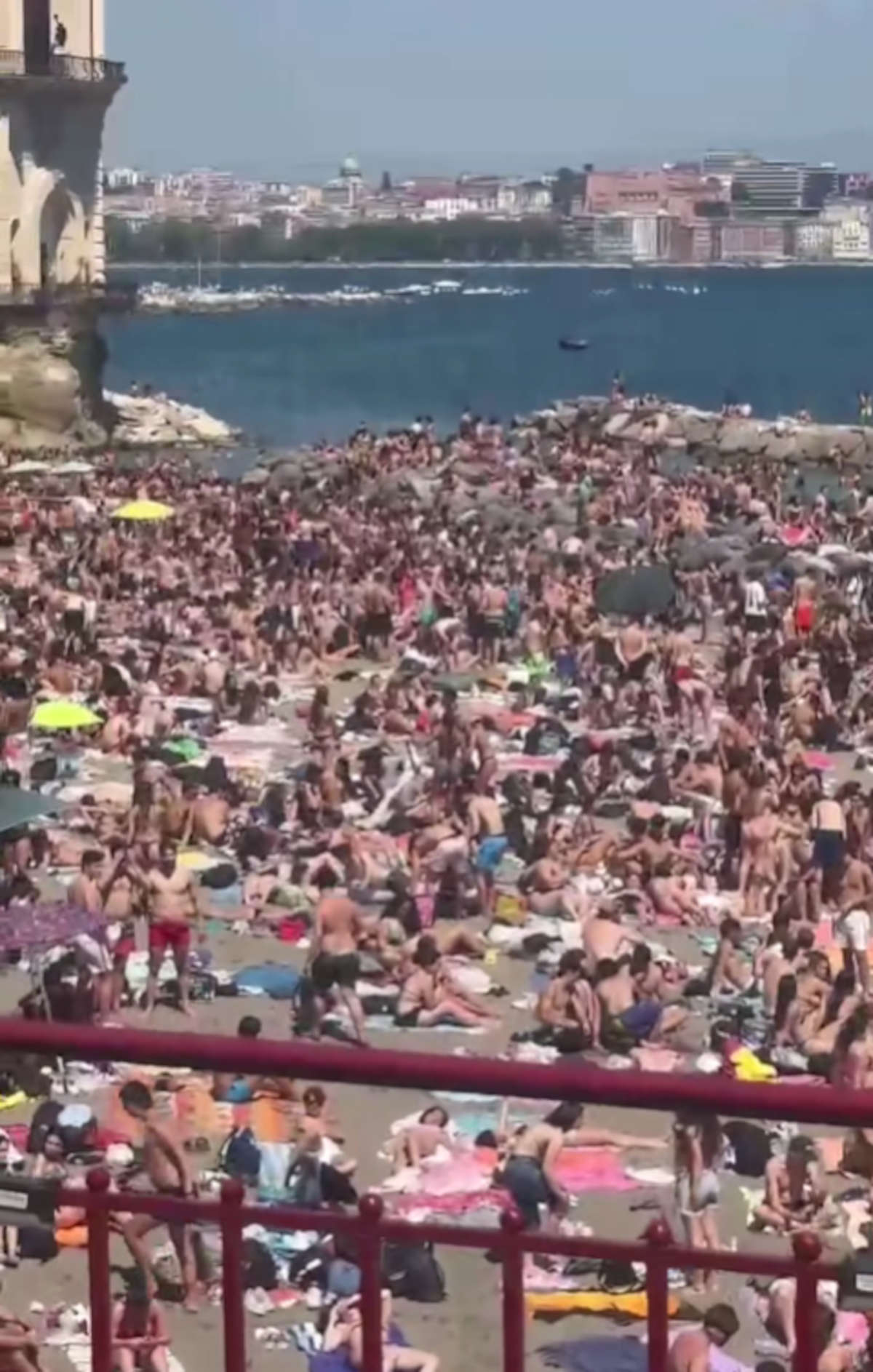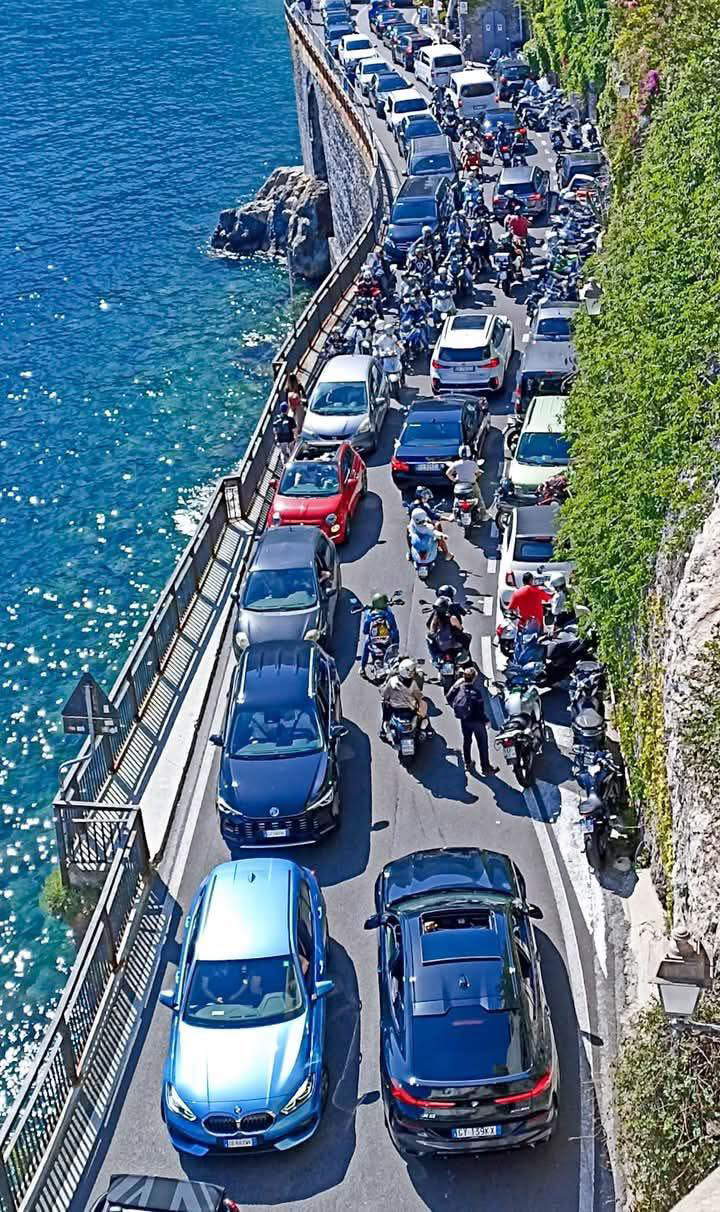"Rude tourism": that’s how 8 p.m. Tg1 anchor Alessio Zucchini introduced the topic, summing up with an adjective-sentence the cases that marked the May Day holiday. From butt-stabbed tourists at the Colosseum to endless queues on the Amalfi Coast, from the saturation of the walkable space in Sirmione to the garbage left on the beach that outraged everyone in Naples. These are a few postcards of the spring-summer tourist season that brings back the ’excessive’ tourism debate on flow management. Basically, one wonders why we all had exactly the same idea of visiting the same beautiful place on the same vacation or vacation day. For this May Day bridge, thanks to favorable weather, 10 million Italians left to enjoy some relaxation in the classic out-of-town trip, according to forecasts by Cna Tourism and Commerce, and some locations have been under pressure. Let’s see a roundup of them.
Let’s start with Sirmione, where a case is mounting. “Closing is not our intention, assessing what is the maximum load that an area can bear is definitely something that needs to be done to ensure safety.” With these words the mayor of Sirmione, Luisa Lavelli, comments on the May Day bridge to Tg1 after the over-booking images that have been doing the rounds on social media with people crowded together as if at the entrance of a stadium. The village on Lake Garda of just 8,000 inhabitants on Friday, May 2, was stormed by tourists who completely paralyzed vehicular and even pedestrian traffic: it was physically impossible to enter the historic center for lack of space. More than 40 minutes of waiting to cross the drawbridge, swear words and big words flew among tourists in the crush, streets clogged and impassable even for electric cars. “During the three holidays,” the mayor explained to Corriere della Sera, “we had 40 thousand more cars than during the same period last year,” and according to mobile phone-generated data collected by Confcommercio Lombardia already between Easter and Easter Monday there were 75 thousand users. Documenting the chaos is the Facebook group "Sei di Sirmione se" ( Are you from Sirmione if) with photos and videos that speak volumes, and now there are those who are calling for a mechanism that governs access according to a defined limit that cannot be exceeded. Suffice it to say that the queue of cars reached as far as the highway toll booth. Certainly weekends like these create inconvenience among residents, and in fact there is no shortage of invective and jokes to the point of almost seeing tourism as the enemy. In fact, we also read from citizens that “the municipal administration must act decisively and urgently otherwise this situation will worsen reaching a point where the rift between tourists and residents will be irremediable, something we all need to avert.” The Consorzio Alberghatori e Ristoratori di Sirmione is also making its voice heard: “We are very concerned about public safety,” president Marco Merlo tells Corriere, “and we hope that the municipality will involve us to identify effective and shared strategies.” However, the mayor says the issue will be considered: “I don’t like the term ’closed number’ so we have asked the Prefect of Brescia for a meeting to deal with any new waves together.”

Same music on another Lombard lake: on Lake Como, trains, boats and ferries caught like stagecoach chased by Indians. In Varenna, pearl of the lake beloved by Manzoni, a village of 700 souls, impassable roads with packed public transportation, and provincial road 72 full of jammed cars. On Easter Sunday i there were 60,000 visitors and nearly 40,000 during the April 25 bridge, La Repubblica reports. Again, we indulge on social media with comments and anger: “Unlivable! To residents only stress and inconvenience,” “The whole lake is a disaster with overtourism,” “You must have the courage to limit the entrances, by reservation, at least for those who arrive by car or motorcycle. Otherwise there are hours of queues due to the absence of parking and the village becomes unmanageable and unlivable.” Lapidary this comment, “This is a small village on the lake. It is not Miami. All its magic and enchantment, jarring with this chaos. For the next four months, it will be a major stress for the residents.” This summer will be even worse for the roads in when a bus service will be activated to replace the train since the Lecco-Colico-Valtellina railway line will be closed for works until mid-September, and there will be seventy buses running on provincial road 72 at all hours slowing down traffic.
Similar to Sirmione is the case of the Cinque Terre, a delicate territory that sees such cases of overbooking every year that the park has prompted it to create one-way transit directions for trails to fluidify travel. The mayor of Riomaggiore, Fabrizia Pecunia, emphasized the need to manage tourist flows, saying that “closed numbers are not needed, but flows must be managed. Rather, it is necessary to manage groups and create itineraries, avoiding overcrowding. We need a national framework and not special laws, we need understandings with the region and trade associations, we need to collaborate without oppositions.”
“There is,” Pecunia told La Repubblica, “a new security ordinance, relative to the outside of the Riomaggiore and Manarola train stations, inside is not my responsibility, which has allowed us to regulate flows in case of overcrowding and danger and to set up a fixed garrison at the tunnel of the latter. I thank the prefecture, police forces, administrations and local police for working together. Tourism should not be approached as an emergency; a long-term strategy needs to be built. We need to establish a permanent technical table that has the competence and responsibility to design coordinated interventions for flow management, landscape protection, safety of public spaces and enhancement of hospitality.”

For his part, park President Lorenzo Viviani raises the bar by relying on artificial intelligence and a predictive portal. “A counter where you can turn to and get information in advance about expected flows every day of the year.” He does not fail to point out to Il Secolo XIX a fact: “We start from the fact that a small part of the Park’s territory is visited: only 4 percent. because most visitors stop in the main streets of the villages and go no further.” The combination of the flooding situations inevitably makes for a negative vacation experience. As La Nazione reports British tourists at the Manarola station were unhappy about too many people and too high prices. On this there is to be said that the highest ticket price is due to the ’tourists’ fare that includes the surcharge over residents. As much as 10 euros per person for the train ride from which to enjoy an extraordinary view, it must be said. To get on the train two hours of waiting and then also happened not to be able to get off due to the large number of people on the ground. That’s why it’s necessary to inform visitors beforehand of what awaits them and in case convince them to change the day or modify the itinerary. “We can’t afford to deal with tourism as an emergency because the risk of reputation is always higher,” says Viviani. And the risk of a negative return for a vacation gone wrong, in the age of social media, is just around the corner: on May 1 in Porto Venere, the carabinieri had to intervene to help about 50 tourists who were stranded because they had run out of public transportation to get away.
Let’s move on to Florence, where state museums open as they are every first Sunday of the month saw a concentration of tourists with wait times of more than an hour and a half: the crush at Palazzo Pitti was also somewhat to blame for the concomitance of #domenicalmuseo, the Ministry of Culture’s initiative that allows free admission to state cultural sites every first Sunday of the month. In the Tuscan capital, the extraordinary opening of the Pitti Palace attracted an exceptional number of visitors. Queues to access the Palatine Gallery and the Royal Apartments exceeded an hour and a half wait, testing tourists’ patience and museum staff’s ability to manage flows.
We move on to Naples with the ugliest image: the Lido delle Monache submerged in garbage. At the end of the day, the beach was covered with an expanse of trash, including bottles, bags and picnic remains: uncivilized. So much so that Congressman Francesco Emilio Borrelli denounced the situation, calling it a “passage of the Huns.” One understands the desire for the sea, one understands fatigue, but one cannot accept that after gobbling one leaves all the dirt on the seashore. Perhaps the words ’free beach’ make people think it belongs to no one instead of feeling it as something that belongs to everyone. Italian or foreigner, Neapolitan or foreigner here there is only to condemn without appeal the real boorish tourism. Same script on the Roman seacoast with the mayor of Fiumicino issuing an ordinance to stop wild movida “We have to change completely,” says Baccini, “mala movida only creates a hit-and-run tourism brings great disservices, abandonment of garbage.”


We return to Campania with a video of a luxury yacht skimming the Faraglioni at marina piccola bay: a novice pirate captain thinks to make a mockery of the limits imposed on navigation and brings the ship too close for me to admire as never before.
Moving on to Rome, there is a tragicomic fact to be accounted for: a 47-year-old tourist, an American living in Taiwan, was skewered by bars while trying to climb over a fence at the Colosseum because he arrived after it was closed. It happened on Friday, and according to reports in Il Messaggero, the man reportedly attempted to gain access to the Flavian amphitheater by climbing over a security barrier, but lost his balance, getting impaled in the lumbosacral area. The tourist was rushed to St. John’s Hospital, where he underwent very delicate surgery. He is now hospitalized and is not reported to be in life-threatening condition. Returning to Taiwan without having seen the Colosseum is indeed difficult for a tourist coming to Rome to accept, but setting out to climb over in order to get in cost him dearly.
In the information society, it seems that the only way to cope with negative aspects from the huge influx of tourists is through communication to deseasonalize and publicize other destinations besides the must-sees from forever. Unfortunately, the antidote to rudeness has not yet been found.
Warning: the translation into English of the original Italian article was created using automatic tools. We undertake to review all articles, but we do not guarantee the total absence of inaccuracies in the translation due to the program. You can find the original by clicking on the ITA button. If you find any mistake,please contact us.